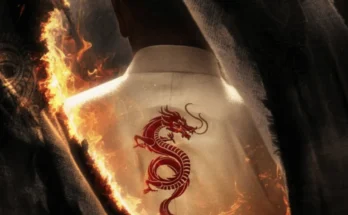(Critical Review)

A cognitive spotlight on the dogmas and dearth that revolve around the social strata.
The nature of humans is to seek out new beginnings that define us as an entity full of curiosity and care. It is our ultimate quest to discover a sense of dignity, freedom, and authenticity on the other end of the continuum of dogmatism and fanaticism. In our rhythm, we ignore the fact that we are the only ones responsible for the chain. A few people dare to plunge into the world of uncertainty and explore and evaluate the other sides to their cognitive assumptions of things that exist in the materialistic world. Vinay KD’s series of Urban Aesthetics, “Wrapped Objects III” expects to uncover those areas of the society that are neglected and concealed, however, which put their colossal spotlight on our impression of the world through their own faculties and command over the real factors utilizing their extreme thinking power. This work challenges the cognitive ability to assess spatial-temporal concepts, as its significant accentuation can be recognized as the assessment of time being time. Delhi’s socio-economic, anthropological, and urbanization developments during the 2000s greatly enhanced this series of art.
To emphasize the ability of the objects to breathe under the cage of uncertainty, the artist takes inspiration from the work of Christo Vladimirov Javacheff. Normalizing and effectively breaking stereotypes about objects’ particular self-identification, this work challenges the concept of objects as their own entity. The idea is to grasp the content within the container of thoughts that it contains. It prevents the analysis from being limited to one perspective. The artist has taken a metaphorical approach to the theme (wrapping) as a representation of the unique, congested, exhausting, isolated, and suffocating lives of humans in different segments of society. Within the painting, the artist has deftly used space to depict the divisions among the social strata. Wrapped objects have a mystical mysticism and arouse several layers of unknowingness in the human mind. In situations where humans are unable to correctly identify anything regardless of shape, form, size, or mass, we treat it as outside our rational grasp and call it our GOD. Upon closer examination, the painting can be seen to be divided into two segments that can be interpreted as two worlds existing within one. Two dimensions seem to be involved: the one on the left seems subtle and settled, while the one on the right seems a little chaotic. Here is what is important to observe: the painted cartons are painted in such a way as to break the rule of supposedly perfect compositions. The metaphor perfectly describes our physical world, since, with the escalating population and greed of humans, there is no more space on Earth. It is all about raising human heads without understanding what life is really all about. In contrast, the figure on the left is composed calmly, which accentuates stability, harmony, and balance. It is an elegant allegory to represent the lives of wise people of the past that are still alive and well because few minds have developed. A viewer would perceive inequality and disturbance in his or her eye by looking at the cartons on the right. Our lives have been deliberately turned upside down to incite a sense of imbalance. The objects are set inside the void and the efficient use of colors, lines, and strokes takes the viewer into an ideal world, It presents unused dimensions of the world within the world and interfaces the being with each metaphysical element that is surviving and can be profoundly entered to exhume the truths that lie within the deep layers of our presence and within the dooms of our conscience.
This painting can be dissected in the way it has been portrayed overall, including the strokes, visual allegories, layers, and sublayer. The canvas makes both solidness and insecurity in the watcher’s eyes and psyches simultaneously. It upgrades the overwhelming worth of our reality seen by our psyche, which fosters its own specific hypothesis about the general presence and the standards which are expected to carry on with this alleged materialistic life. The artist drives our extreme selves both profoundly and rationally into the world beyond our cognitive abilities. It’s an impression of our utopianism and illusionary existences of us, which must be perceived by the voyage of our cognizant considerations and lives.



